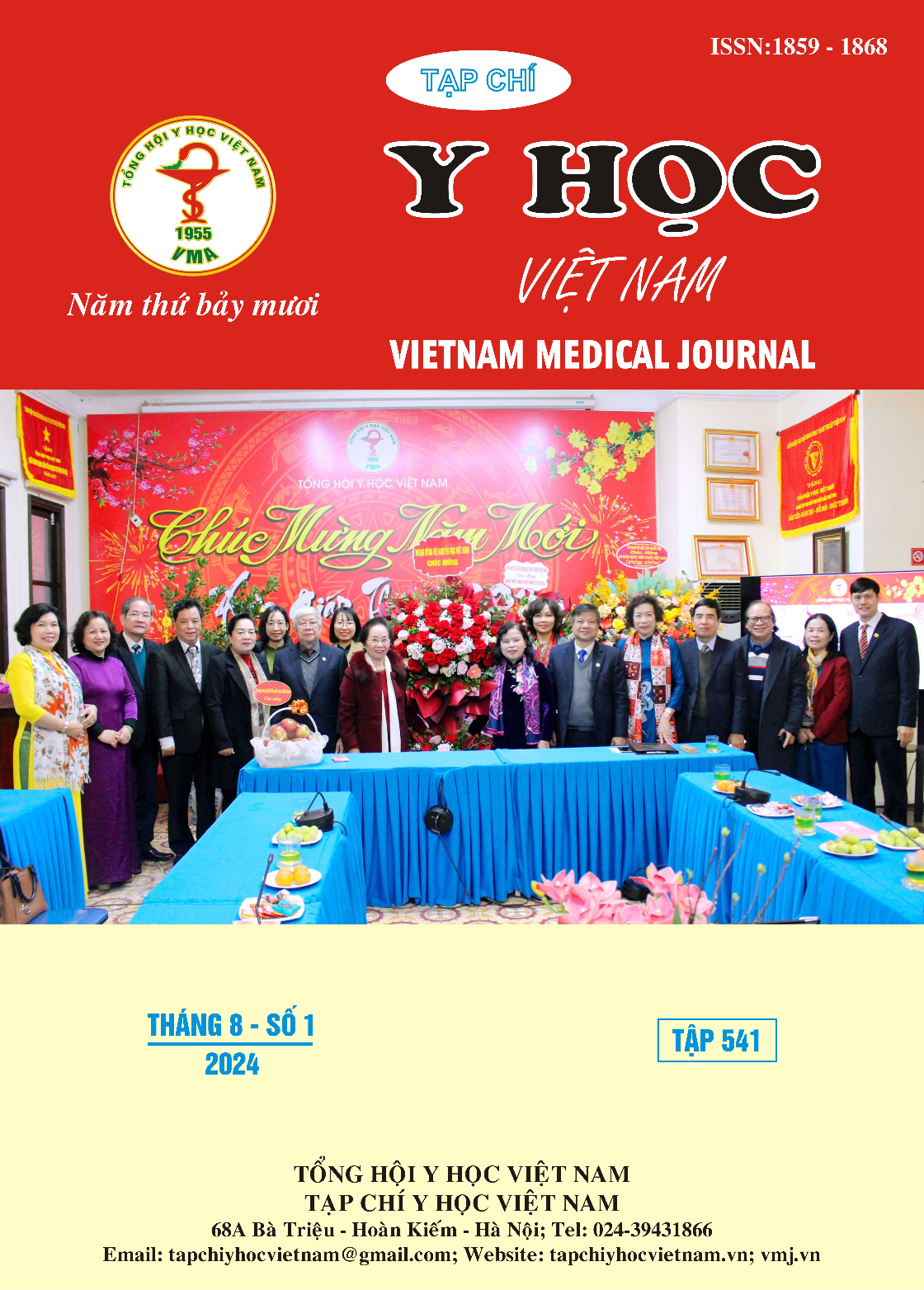EFFECTIVE UTERINE ARTERY EMBOLIZATION FOR THE TREATMENT OF UTERINE LEIOMYOMA BY CHANGING THE SIZE OF MICROSPHERES
Main Article Content
Abstract
Objective: Evaluate the effectiveness of treating uterine leiomyoma artery embolization by changing the size of microspheres. Subjects and methods: A retrospective combined prospective study on 43 patients with uterine leiomyoma treated uterine artery embolization by changing the size of microspheres at Tam Anh General Hospital, Hanoi, from June 2022 to December 2023. Results: The average age was 40.8 ± 7.1 (22–53 years old), and the main reasons for hospitalization were menorrhagia (69.8%) and multiple tumors (51.2%), with tumors with hyperintensity on T2W accounting for 14%. The average diameter of the largest tumor was 81.8 ± 38.1 mm, with the average weight of the largest tumor being 259.9 ± 201.5g. The average number of seed tubes used was 3.0 ± 0.5. Microspheres with a size of 700–900 µm are the most used. The tumor weight reduction rate after 6 months of intervention is 69.0 ± 11.3%. Patients with uterine leiomyoma have characteristics of hyperintensity on T2W and vivid enhancement compared to the uterine muscle, decreasing in size after intervention more than other tumors. Conclusion: Embolization of uterine leiomyomas by changing the size of microspheres is a safe and effective method to treat symptomatic uterine leiomyomas.
Article Details
Keywords
Uterine leiomyoma, uterine artery embolization, microspheres, Magnetic Resonance Imaging
References
2. Das R, Wale A, Renani SA, et al. Randomised Controlled Trial of Particles Used in Uterine fibRoid Embolisation (PURE): Non-Spherical Polyvinyl Alcohol Versus Calibrated Microspheres. Cardiovasc Intervent Radiol. 2022;45(2):207-215. doi:10.1007/s00270-021-02977-0
3. Munro MG, Critchley HOD, Fraser IS, FIGO Menstrual Disorders Working Group. The FIGO classification of causes of abnormal uterine bleeding in the reproductive years. Fertil Steril. 2011;95(7): 2204-2208, 2208.e1-3. doi:10.1016/ j.fertnstert.2011.03.079
4. Jiang W, Shen Z, Luo H, Hu X, Zhu X. Comparison of polyvinyl alcohol and tris-acryl gelatin microsphere materials in embolization for symptomatic leiomyomas: a systematic review. Minim Invasive Ther Allied Technol. 2016;25(6): 289-300. doi:10.1080/13645706.2016.1207667
5. Bellala P, Valakkada J, Ayyappan A, Kumar S. Evidences in Uterine Artery Embolization: A Radiologist’s Primer. Journal of Clinical Interventional Radiology ISVIR. 2023;07(02):087-096. doi:10.1055/s-0042-1758050
6. Palanisamy V, Mahalingam A, Ramiah N, Alagappan P, Jagannathan D. Role of Ovarian Artery to Uterine Artery Anastomosis in Uterine Artery Embolisation: A Retrospective Study. JCDR. Published online 2022. doi:10.7860/JCDR/2022/ 57888.17308
7. ÇAKIR Ç, KILINÇ F, DENİZ MA, KARAKAŞ S. Can pre-procedural MRI signal intensity ratio predict the success of uterine artery embolization in treatment of myomas? Turk J Med Sci. 2021; 51(3): 1380-1387. doi:10.3906/sag-2012-136
8. Kurban LAS, Metwally H, Abdullah M, Kerban A, Oulhaj A, Alkoteesh JA. Uterine Artery Embolization of Uterine Leiomyomas: Predictive MRI Features of Volumetric Response. AJR Am J Roentgenol. 2021;216(4):967-974. doi:10.2214/AJR.20.22906


